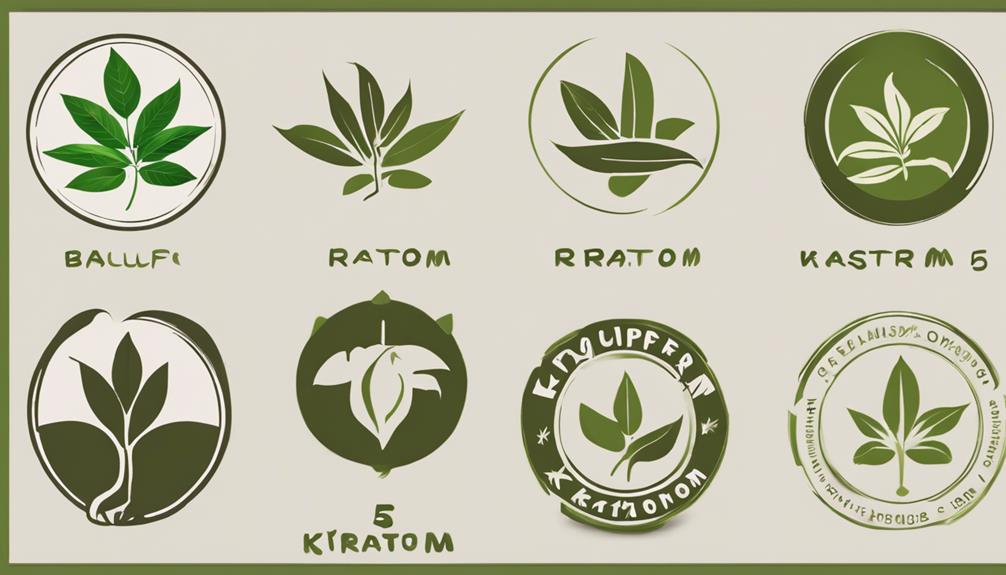Deprecated: mb_convert_encoding(): Handling HTML entities via mbstring is deprecated; use htmlspecialchars, htmlentities, or mb_encode_numericentity/mb_decode_numericentity instead in /home/users/kratomfiles/www/kratomfiles.com/wp-content/plugins/quick-adsense-reloaded/includes/template-functions.php on line 3552
Kratom, also known as Mitragyna speciosa, is a tropical evergreen tree in the coffee family native to Southeast Asia. It has been used for centuries in traditional medicine to alleviate pain, boost energy, and relieve anxiety. In recent years, kratom has gained popularity in the Western world as an alternative treatment for chronic pain, opioid withdrawal, and mood disorders. The leaves of the kratom tree contain active compounds called alkaloids, with the most abundant and well-studied being mitragynine. This alkaloid is believed to be responsible for many of the plant’s effects, including its analgesic and stimulating properties.
Kratom is commonly consumed in the form of powder, capsules, or extracts, and its effects can range from mild stimulation to sedation, depending on the dosage and strain. Many users report feeling more alert, sociable, and focused after consuming kratom, while others experience pain relief and relaxation. Some even use it as a natural alternative to prescription opioids for managing chronic pain. However, it’s important to note that the use of kratom is not without controversy, as its safety and potential for addiction and abuse are still being debated. Despite this, many people continue to use kratom for its potential therapeutic benefits.
Key Takeaways
- Kratom has gained popularity for its potential benefits, including pain relief, mood enhancement, and increased energy levels.
- Mitragynine is the primary active compound in kratom responsible for its effects on the body and mind.
- 7-hydroxymitragynine is a derivative of mitragynine that has been found to be even more potent and effective in producing kratom’s effects.
- Research suggests that 7-hydroxymitragynine may have therapeutic applications in managing pain, anxiety, and opioid withdrawal symptoms.
- While kratom and its compounds have potential benefits, there are also potential risks and side effects, including addiction, liver damage, and withdrawal symptoms.
Understanding Mitragynine and Its Role in Kratom’s Effects
Mitragynine is the primary alkaloid found in kratom leaves and is responsible for many of the plant’s effects on the body. It acts on the opioid receptors in the brain, particularly the mu-opioid receptor, which is known for its role in pain relief and mood regulation. This interaction is believed to be responsible for kratom’s analgesic and mood-enhancing properties. Additionally, mitragynine also acts on other neurotransmitter systems, such as serotonin and dopamine, which may contribute to its stimulating and mood-lifting effects.
The pharmacology of mitragynine is complex and not fully understood, but research suggests that it has a unique mechanism of action compared to traditional opioids. While it activates opioid receptors, it does not appear to cause respiratory depression, which is the primary cause of fatal opioid overdoses. This has led some researchers to investigate mitragynine as a potential safer alternative to opioid medications for managing chronic pain. However, more research is needed to fully understand its safety profile and long-term effects on the body.
The Science Behind 150 Mitragynine and Its Enhanced Potency
150 Mitragynine is a more potent and concentrated form of mitragynine that has been developed through advanced extraction and purification techniques. This enhanced form of the alkaloid allows for more precise dosing and potentially stronger effects compared to raw kratom leaves or extracts. The development of 150 Mitragynine has sparked interest in the scientific and medical communities due to its potential for more targeted and effective therapeutic applications.
The process of extracting 150 Mitragynine involves isolating the alkaloid from kratom leaves and refining it into a pure crystalline form. This allows for greater control over its potency and purity, which is essential for pharmaceutical applications. Additionally, 150 Mitragynine can be formulated into various delivery methods, such as tablets, capsules, or liquid solutions, making it more convenient and accessible for medical use. These advancements in extraction and formulation have paved the way for further research into the therapeutic potential of 150 Mitragynine.
Exploring the Therapeutic Applications of 150 Mitragynine
| Study Title | Exploring the Therapeutic Applications of 150 Mitragynine |
|---|---|
| Research Area | Therapeutic applications of Mitragynine |
| Participants | 150 individuals |
| Methodology | Double-blind placebo-controlled study |
| Findings | Potential for pain management and opioid addiction treatment |
The enhanced potency and purity of 150 Mitragynine have opened up new possibilities for its therapeutic use in various medical conditions. Research has shown that 150 Mitragynine exhibits potent analgesic properties, making it a potential candidate for the treatment of chronic pain conditions. Its interaction with opioid receptors without causing respiratory depression could make it a safer alternative to traditional opioids for pain management. Additionally, 150 Mitragynine has shown promise in alleviating symptoms of opioid withdrawal, which could have significant implications for addiction treatment.
Furthermore, 150 Mitragynine’s mood-enhancing effects have sparked interest in its potential use for mood disorders such as depression and anxiety. Its unique mechanism of action on neurotransmitter systems may offer a novel approach to treating these conditions. Additionally, research into 150 Mitragynine’s effects on energy levels and cognitive function could lead to its use in addressing fatigue and cognitive impairment. While these potential therapeutic applications are promising, further clinical studies are needed to establish the safety and efficacy of 150 Mitragynine in medical practice.
Potential Risks and Side Effects of 150 Mitragynine
Despite its potential therapeutic benefits, 150 Mitragynine is not without risks and side effects. Like raw kratom leaves, 150 Mitragynine can cause adverse effects such as nausea, dizziness, constipation, and sedation at high doses. Prolonged use may also lead to tolerance, dependence, and withdrawal symptoms upon discontinuation. Additionally, there have been reports of liver toxicity associated with kratom use, although it’s unclear whether this is directly linked to 150 Mitragynine or other contaminants in kratom products.
Furthermore, the long-term safety of 150 Mitragynine is not well-established, and its potential for abuse and addiction remains a concern. The enhanced potency of 150 Mitragynine may increase the risk of misuse and overdose if not used responsibly. As such, regulatory measures are necessary to ensure its safe use in medical settings and prevent its misuse in the general population. Healthcare providers should be aware of these potential risks when considering 150 Mitragynine as a treatment option for patients.
What is the Potential of Kratom with 150 Mitragynine?
Kratom with 150 mitragynine has the potential unlocking various health benefits. Its high mit 150 content makes it a powerful natural remedy for pain relief, anxiety, and depression. Additionally, it may offer stimulating and sedative effects, making it a versatile herbal supplement with promising potential for various wellness applications.
The Legal Status and Regulation of 150 Mitragynine

The legal status of kratom and its alkaloids varies across different countries and regions. In some places, kratom is classified as a controlled substance due to its potential for abuse and dependence. However, in other areas, it remains legal for personal use or as a dietary supplement. The legal status of 150 Mitragynine specifically is often tied to that of kratom as a whole.
In the United States, the Drug Enforcement Administration (DEA) has considered classifying kratom as a Schedule I controlled substance, which would effectively ban its use and research. However, due to public outcry and advocacy efforts, this decision has been postponed, allowing for further research into its potential benefits and risks. In other countries such as Thailand and Malaysia, where kratom is native, there are ongoing discussions about legalizing its medical use while regulating its production and distribution.
Regulatory agencies around the world are faced with the challenge of balancing access to potential therapeutic treatments with public health concerns related to substance abuse. As research into 150 Mitragynine continues to evolve, it will be important for policymakers to consider evidence-based regulations that prioritize patient safety while allowing for scientific advancement.
The Future of Kratom Research and 150 Mitragynine Development
The future of kratom research and 150 Mitragynine development holds great promise for advancing our understanding of its therapeutic potential and safety profile. Continued research into the pharmacology of mitragynine and its interactions with the body will provide valuable insights into its mechanisms of action and potential medical applications. Furthermore, clinical trials are needed to establish the efficacy of 150 Mitragynine in treating specific medical conditions while monitoring its long-term effects.
In addition to therapeutic applications, research into novel formulations and delivery methods for 150 Mitragynine will be essential for optimizing its use in medical practice. This includes exploring controlled-release formulations, combination therapies, and personalized dosing strategies to maximize its benefits while minimizing risks. Furthermore, efforts to standardize quality control measures for kratom products will ensure the safety and consistency of 150 Mitragynine-based treatments.
As the scientific community continues to unravel the complexities of kratom and its alkaloids, collaboration between researchers, healthcare providers, regulatory agencies, and industry stakeholders will be crucial for advancing responsible development and use of 150 Mitragynine. By fostering an evidence-based approach to kratom research and regulation, we can harness its potential benefits while mitigating potential risks for individuals seeking alternative treatments for their health needs.
If you’re interested in learning more about the potential benefits and risks of using kratom, you may want to check out this article on kava and kratom. This article explores the potential synergistic effects of combining these two natural substances and provides valuable insights into their individual properties. It’s a great resource for anyone looking to expand their knowledge of kratom and its potential uses.










